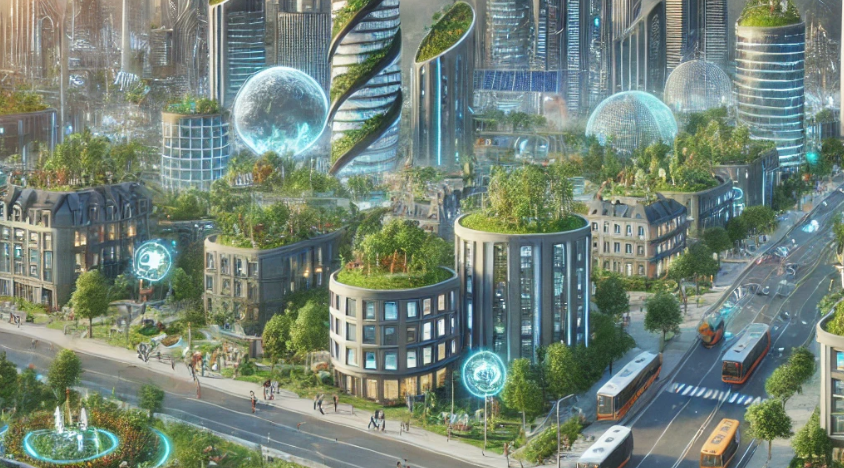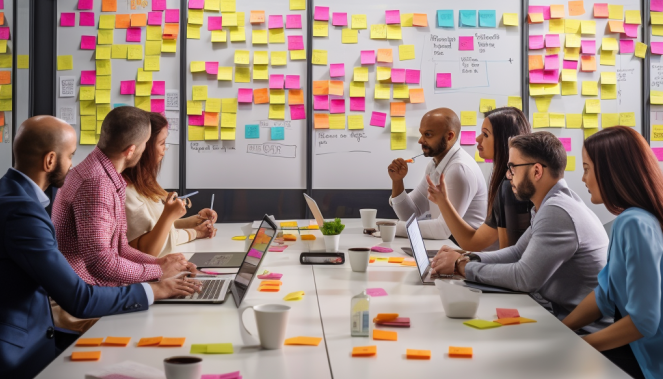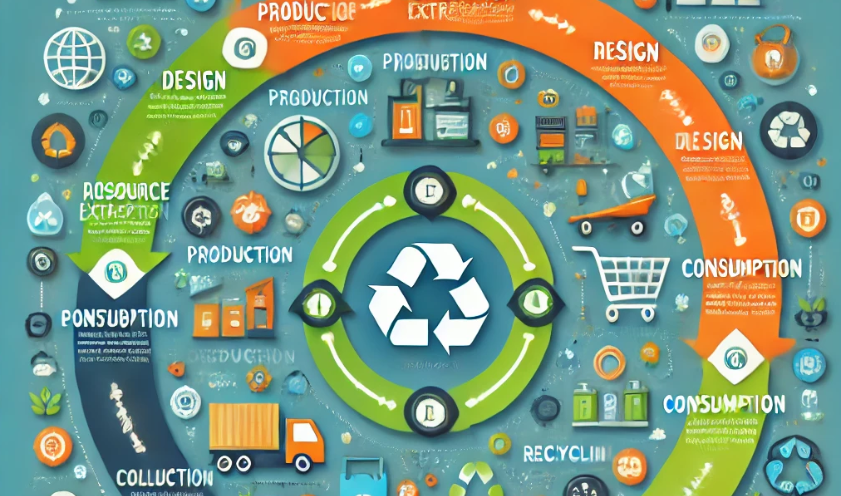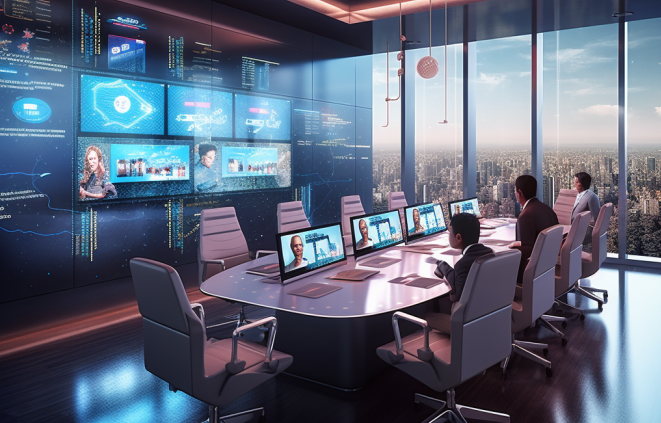In recent years, the concept of a circular economy has gained significant traction as businesses seek more sustainable and efficient ways to operate. This innovative approach challenges the traditional linear “take-make-dispose” model, offering a regenerative alternative that promises both environmental and economic benefits. But what exactly does it mean to design a circular economy business model, and how can companies successfully implement this paradigm shift?
Understanding the Circular Economy
At its core, the circular economy is based on three fundamental principles: designing out waste and pollution, keeping products and materials in use, and regenerating natural systems. This approach aims to create a closed-loop system where resources are used, reused, and recycled indefinitely, minimizing waste and environmental impact while maximizing value.
Dr. Sarah Chen, a sustainability expert at Stanford University, explains, “The circular economy represents a fundamental shift in how we think about production and consumption. It’s not just about recycling; it’s about reimagining entire business models and supply chains to create a more sustainable and resilient economy.”
Key Benefits of Circular Economy Models
- Cost Reduction: By reusing materials and minimizing waste, companies can significantly reduce their raw material and disposal costs.
- Innovation Opportunities: Designing for circularity often leads to innovative product and service offerings, opening up new market opportunities.
- Enhanced Brand Image: Consumers increasingly favor environmentally responsible companies, making circular economy initiatives a powerful branding tool.
- Regulatory Compliance: As governments worldwide implement stricter environmental regulations, circular models can help businesses stay ahead of compliance requirements.
- Resilience: Circular systems are often more adaptable to supply chain disruptions and resource scarcity.
Types of Circular Economy Business Models
There are several approaches to implementing a circular economy model, each suited to different industries and business types:
Product-as-a-Service (PaaS): Instead of selling products outright, companies offer them on a subscription or rental basis. This model incentivizes manufacturers to create durable, easily maintainable products.
Example: Philips Lighting offers “light as a service” to commercial clients, maintaining ownership of the fixtures and being responsible for their maintenance and eventual recycling.
Sharing Platforms: These models facilitate the sharing of underutilized assets, increasing their use and reducing the need for new production.
Example: Airbnb enables homeowners to rent out spare rooms or entire properties, maximizing the use of existing housing stock.
Resource Recovery: This model focuses on extracting value from waste products and by-products.
Example: TerraCycle partners with brands to collect and recycle traditionally non-recyclable waste streams, turning them into new products.
Product Life Extension: These models aim to extend the useful life of products through repair, refurbishment, or remanufacturing.
Example: Patagonia’s Worn Wear program repairs and resells used clothing, extending the life of their products.
Circular Supply Chains: This approach involves using renewable, recyclable, or biodegradable materials in production processes.
Example: Interface, a carpet manufacturer, uses recycled fishing nets as a raw material for their carpet tiles.
Designing a Circular Economy Business Model
Transitioning to a circular economy model requires careful planning and execution. Here are the key steps in the design process:
- Assess Your Current Model: Analyze your existing business model, identifying areas of waste and inefficiency.
- Set Clear Goals: Define specific, measurable objectives for your circular economy initiative.
- Engage Stakeholders: Involve employees, suppliers, customers, and other stakeholders in the design process to ensure buy-in and gather diverse perspectives.
- Map Material Flows: Create a detailed map of how materials and resources flow through your business, identifying opportunities for circularity.
- Innovate and Prototype: Develop and test new circular products, services, or processes on a small scale before full implementation.
- Leverage Technology: Explore how emerging technologies like IoT, AI, and blockchain can enable circular models.
- Measure and Iterate: Implement robust metrics to track progress and continuously refine your approach.
John Doe, CEO of GreenTech Solutions, emphasizes the importance of a holistic approach: “Successful circular economy implementation requires rethinking every aspect of your business, from product design to customer relationships. It’s challenging, but the long-term benefits are immense.”
Overcoming Challenges in Implementation
While the benefits of circular economy models are clear, implementation can face several hurdles:
- Initial Costs: Transitioning to a circular model often requires significant upfront investment in new processes and technologies.
- Complex Supply Chains: Coordinating with suppliers and partners to create closed-loop systems can be challenging.
- Consumer Behavior: Shifting consumer mindsets from ownership to usage-based models can take time.
- Regulatory Barriers: Some existing regulations may inadvertently hinder circular economy initiatives.
- Technical Challenges: Designing products for easy disassembly and recycling can be technically complex.
To overcome these challenges, companies need to take a long-term view and invest in education, both internally and for their customers. Collaboration with industry peers, suppliers, and even competitors can also help address shared obstacles.
Measuring Circular Economy Performance
To ensure the success of circular economy initiatives, it’s crucial to establish clear metrics and key performance indicators (KPIs). Some important measures include:
- Material circularity index
- Waste reduction percentage
- Product lifespan extension
- Energy efficiency improvements
- Customer engagement in circular programs
Regular monitoring and reporting of these metrics can help businesses track progress and identify areas for improvement.
Future Trends and Opportunities
As the circular economy concept matures, several exciting trends are emerging:
- Digital Passports: Products with embedded information about their components and lifecycle, facilitating easier recycling and reuse.
- Artificial Intelligence: AI-powered systems optimizing resource use and predicting maintenance needs in circular systems.
- Biomimicry: Designing products and processes inspired by nature’s circular systems.
- Cross-Industry Collaboration: Increased partnerships between different sectors to create innovative circular solutions.
- Policy Support: Growing government initiatives to incentivize circular economy practices.
Jane Smith, a pitch deck designer and sustainability consultant, notes, “The circular economy is not just a trend; it’s becoming a fundamental business imperative. Companies that fail to adapt risk being left behind in an increasingly resource-constrained world.”
Conclusion
Designing a circular economy business model is a complex but rewarding endeavor. It requires a fundamental rethinking of how value is created, delivered, and captured. While challenges exist, the potential benefits – both environmental and economic – are substantial. As we move towards a more sustainable future, businesses that embrace circularity will be well-positioned to thrive.
By starting small, setting clear goals, and continuously iterating, companies of all sizes can begin their journey toward a more circular future. The transition may not be easy, but it’s increasingly necessary for long-term success in a world of finite resources and growing environmental concerns.








